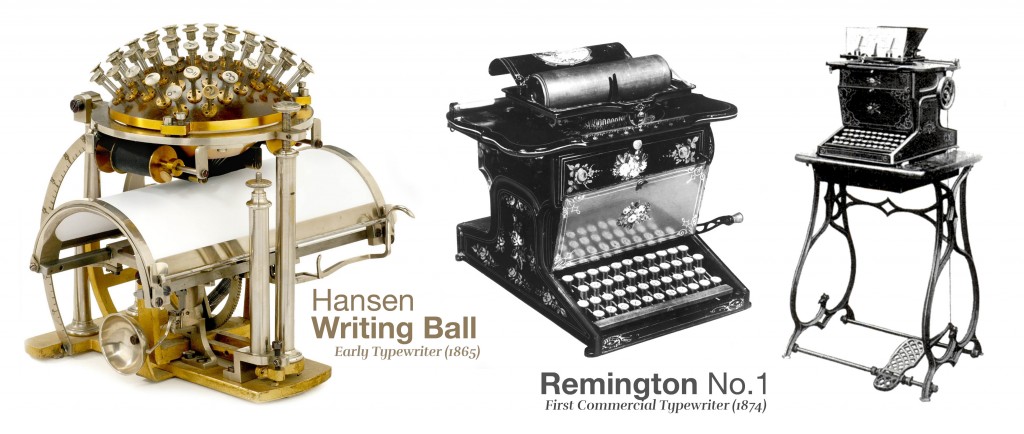The History of Touch Technology

“Touch Technology” as we define it today seems to disconnect itself from the history of type. However, it is vital to recognise the crucial role that the humble (and now-obsolete) typewriter played in the evolution of today’s touch input technologies. For the first time in mankind, since physically inscribing on rock or parchment, a machine with a predefined set of alphabets could “write” or print on-demand.
The predecessors to the first QWERTY keyboards, these ingenious inventions were powered by the mind and muscle (note the foot pedal on the third image). As for being powered by the mind, it is vital to remember that there was no such thing as “undo” or “delete”. So every word that was typed, had to be thought and processed before it was actually committed to a keystroke on paper.
Whether we choose to remember this valuable link to our printed past or not, our modern devices of today from the e-book reader to photocopy devices have their DNA rooted in this piece of history. If the Hansen writing ball was the device of choice for the office of the 1800s, then our keyboards, laptops and digital devices may have looked completely different today. Image a spherical cellphone or a oblong iPad. What wonders we would have seen, if our cameras gave out bubbles of photographs instead of boring postcards. Or imagine the beauty of books if all A4 was a paper size with rounded corners. For what it’s worth, our Printing Presses today would have evolved into amazing modern machines that would have done 3D printing ages ahead of its time.
